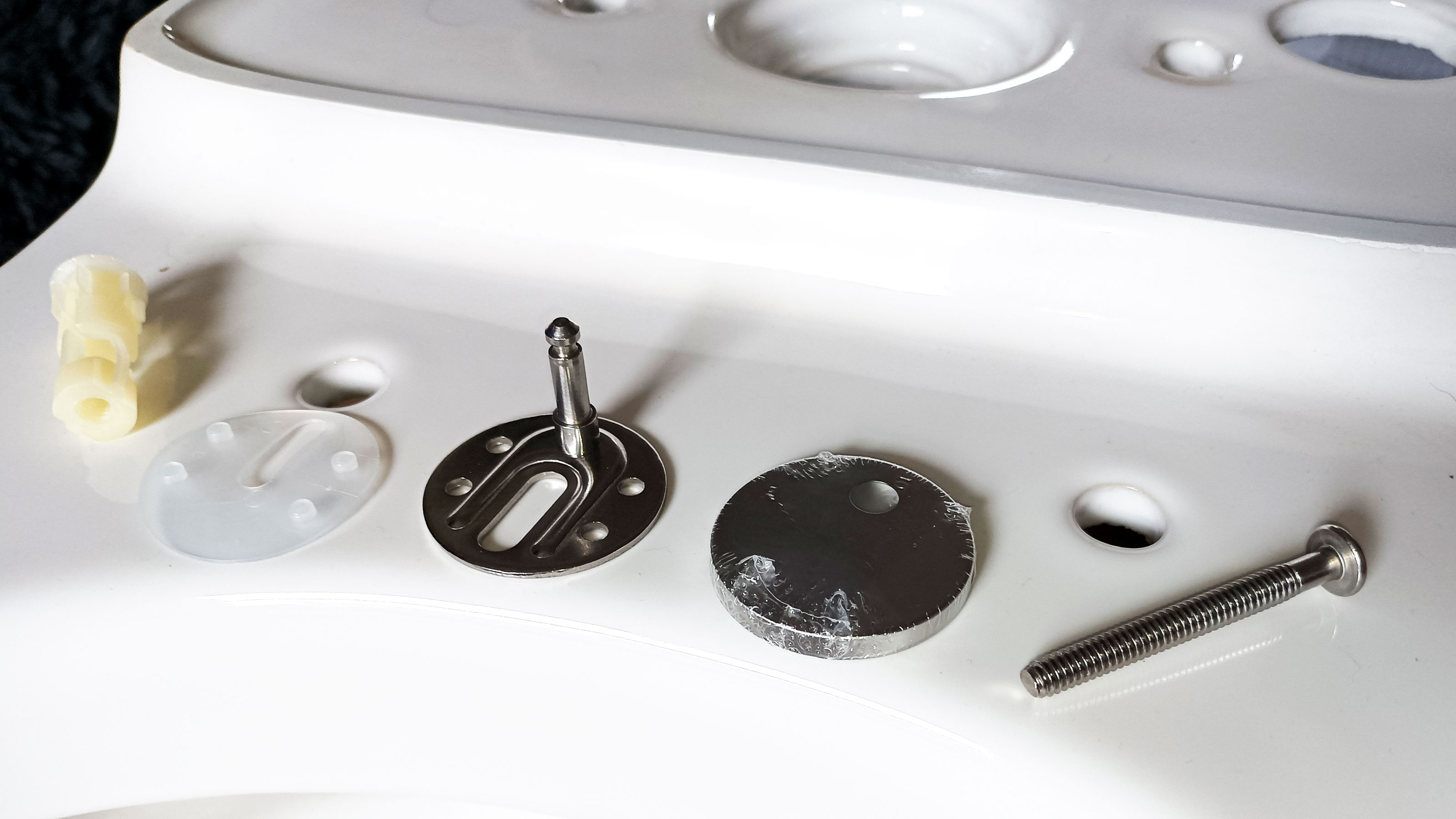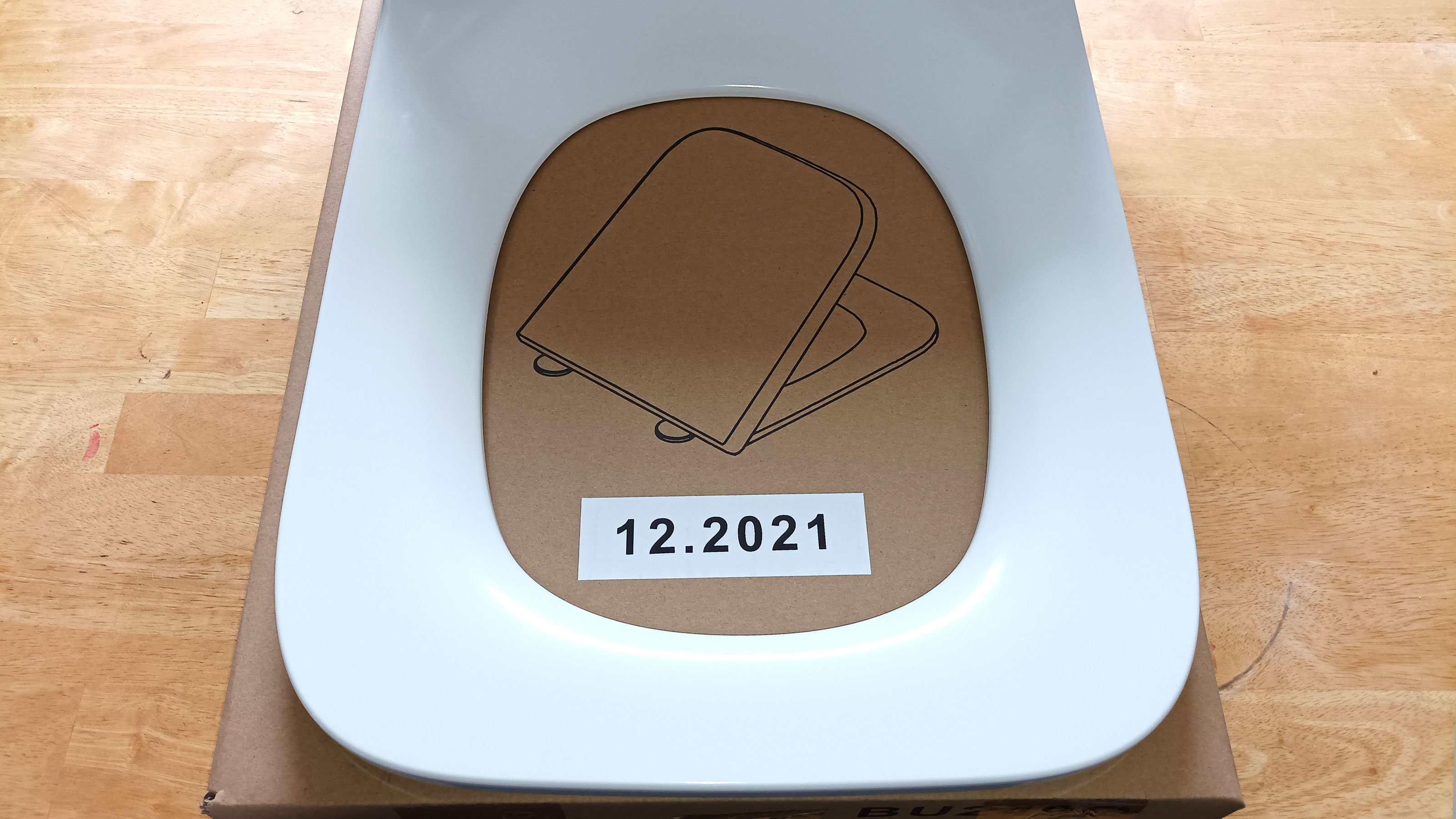Fitting a toilet seat: How to install a new one or replace
Fitting a toilet seat is a task that any DIYer can take on, but they are not all the same. Get the insight on sizes, types of fittings and how to install

Is it time to start thinking of fitting a new toilet seat? Has your old one seen better days? Have you bought a new one to match your newly decorated bathroom? Or have you invested in a brand new toilet to update your bathroom and it comes with a toilet seat included?
A toilet seat is a small part of your bathroom fitting and typically a lot less to buy than a set of shiny new taps. But it still needs to be fitted properly to make your new toilet seat is steady and firm. No-one wants a wobbly toilet seat.
Here we tell you how to install or replace a toilet seat for the common toilet types.
1. Fitting a toilet seat: The tools you will need
Before embarking on this easy DIY task you'll need a couple of tools to hand, including:
- Phillips and flathead screwdriver
- Pliers
- Rubber gloves
2. Removing the old toilet seat
If you’re installing a new toilet seat on your existing toilet you will need to remove the old seat first. If your toilet seat is attached to an open back toilet the hinges are attached via a couple of bolts and fixed on the bottom by two nuts. If you have a shrouded or back to wall toilet the process is slightly different:
1. Remove caps
Get a flat head screwdriver and gently ease off the caps covering the hinges. Start in one position and go around the cap cover at regular intervals to make removing easier and less likely to cause damage.
2. Undo the bolts and remove
With the cap cover off you will see the bolts holding the seat. Underneath there will be a bolt or wingnut. Get a pair of pliers and hold a bolt/wingnut while at the same time undoing the bolt. Now do the other bolt and remove the toilet seat.
3. Top fixing removal
If you have a shrouded toilet with top fixing fittings the process is very similar. Remove the cap cover to expose the bolts. Get a Phillips screwdriver and undo the bolt. Now remove the seat and pull out the fitting in the holes with a screwdriver or pair of pliers.
3. Installing a new toilet seat
There are typically two options when it comes to installing a new toilet seat: top and bottom fixing. Both are very similar.
Fixing a bottom fixing seat
Get your new fittings and assemble the hinge, add the bolt and place through the seat hole. Now get the nut and loosely tighten holding the nut and screwing the bolt. Do the same for the other hinge.
Now move the seat into position and tighten up the bolt and nut. Do not over tighten, just enough to keep the seat in position. Now add the hinge cover and get the toilet seat a sit down test to make sure it doesn’t move.
Installing a top fixing seat
Shrouded or back to wall toilets have what are known as top fixing fittings as there is no access to the underneath of the toilet. Push in the screw fitting, assemble the hinge, place in position and tighten the bolt with a screwdriver. To finish, add the hinge cover and do a sit down test.

Are toilet seats a standard size?
No — toilet dimensions come in different sizes – and shapes – which means that toilet seats come in different shapes and sizes, too. To make sure that you are getting the right toilet seat for your toilet, first take notice of the shape. Most toilets are oval, but elongated oval and square are common shapes as well.
To make sure that you are getting the right size toilet seat you will need to take four different measurements: length, width, height and distance.
Measure the length from the seat holes to the front of the toilet; the width is from edge to edge; the height is from the holes to cistern (this should be a small measurement); and distance is the measurement from fixing hole to fixing hole.

Do all toilet seats have the same fittings?
No they don't — whether fitting a new toilet or replacing an old seat there are two common types of fitting: bottom fixing and top fixing.
Bottom fixing is the common option where the fixings go down through the holes from the top and are fixed from the bottom. Top fixing is for fully shrouded toilets or back to wall toilets where there is no access to the fix at the bottom.
How do you tighten a toilet seat with concealed fittings?
Concealed fittings or top fixings hinges are easy to tighten. These typically have a screw that will be hidden under a hinge cover. Get a small screwdriver to lift the hinge cover to reveal the screw. Get a larger screwdriver and tighten. If the screw won’t tighten the fitting might need to be replaced.
How much does it cost to replace a toilet seat?
If you are putting together a bathroom on a budget your toilet may come with a cheap toilet seat which you want to replace. The cheapest (and free) way to replace it is fitting itself.
But if you don't have the time and want to pay someone else to do the job for you can call out a plumber. They charge around £40+ an hour.
The job should only take 15 to 30 minutes so they may charge less. Alternatively you can look for a local handyman who will probably charge slightly less.
Get the Homebuilding & Renovating Newsletter
Bring your dream home to life with expert advice, how to guides and design inspiration. Sign up for our newsletter and get two free tickets to a Homebuilding & Renovating Show near you.
Steve Jenkins is a freelance content creator with over two decades of experience working in digital and print and was previously the DIY content editor for Homebuilding & Renovating.
He is a keen DIYer with over 20 years of experience in transforming and renovating the many homes he has lived in. He specialises in painting and decorating, but has a wide range of skills gleaned from working in the building trade for around 10 years and spending time at night school learning how to plaster and plumb.
He has fitted kitchens, tiled bathrooms and kitchens, laid many floors, built partition walls, plastered walls, plumbed in bathrooms, worked on loft conversions and much more. And when he's not sure how to tackle a DIY project he has a wide network of friends – including plumbers, gas engineers, tilers, carpenters, painters and decorators, electricians and builders – in the trade to call upon.

